
The Seven Wonders of the Ancient World
Beginning in 425 BCE, legendary scholars like Philo of Byzantium compiled an unrivaled ranking of the greatest artificial structures on Earth. After nearly two and a half thousand years, we look back to see what remains of these mythological creations. Destruction events like wars and earthquakes whittled these monuments down; for some, only artistic reimaginings and historical descriptions exist. Regardless, each of these sites is worthy of being unearthed and celebrated. By engaging with the stories of the civilizations that came before us, we honor the ingenuity and prowess of our ancestors.
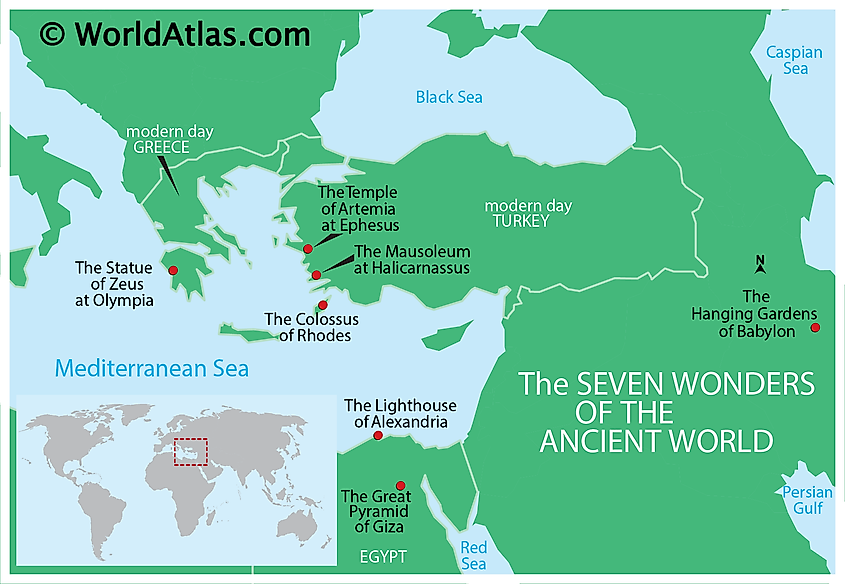
These are the Seven Wonders of the Ancient World:
- Hanging Gardens Of Babylon
- Statue Of Zeus At Olympia
- Mausoleum At Halicarnassus
- Temple Of Artemis
- Lighthouse Of Alexandria
- Colossus Of Rhodes
- The Great Pyramid Of Giza
Hanging Gardens Of Babylon
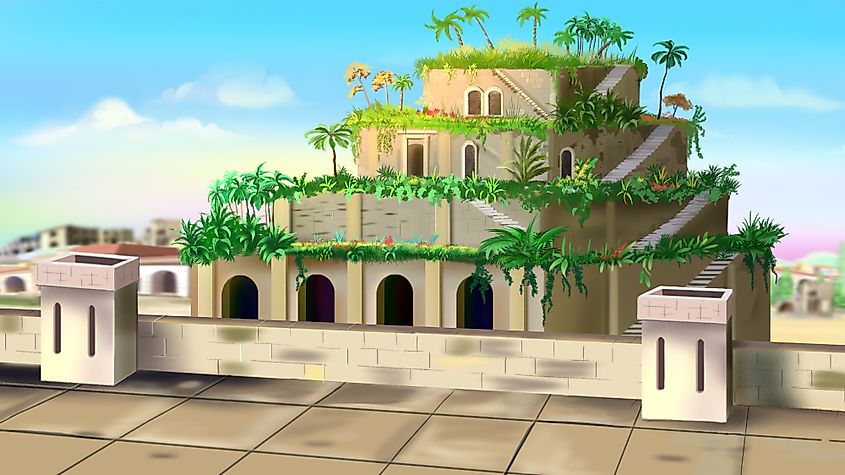
The greatest enigma on this list, the Hanging Gardens of Babylon reportedly stood in the ancient city-state of Babylon, near present-day Hillah, Iraq. They were a complex of ascending terraces, constructed around 600 BCE during the reign of King Nebuchadnezzar II, although no concrete archaeological evidence confirms this. These terraces, built from mud bricks and waterproofed with lead, were speculated to reach a height of about 23 m (75 ft), equivalent to a modern four-story building.
The gardens featured a variety of trees, shrubs, and vines, watered through a sophisticated irrigation system. Water was drawn from the Euphrates River, transported uphill using a mechanical device - possibly an Archimedes' screw or a similar apparatus. The gardens' layout, with its series of tiers, created the illusion of a mountain of lush greenery, a remarkable sight in an otherwise arid environment.
The exact dimensions of the gardens remain uncertain due to a lack of concrete historical data. Some ancient texts suggest a breadth of 120 m by 120 m (400 ft by 400 ft), but this is unverified. Additionally, the survival of the gardens is uncertain, with some accounts suggesting destruction by an earthquake around the first century BCE. The Hanging Gardens are a catalyst for debate among historians, given their lack of archaeological confirmation.
Statue Of Zeus At Olympia
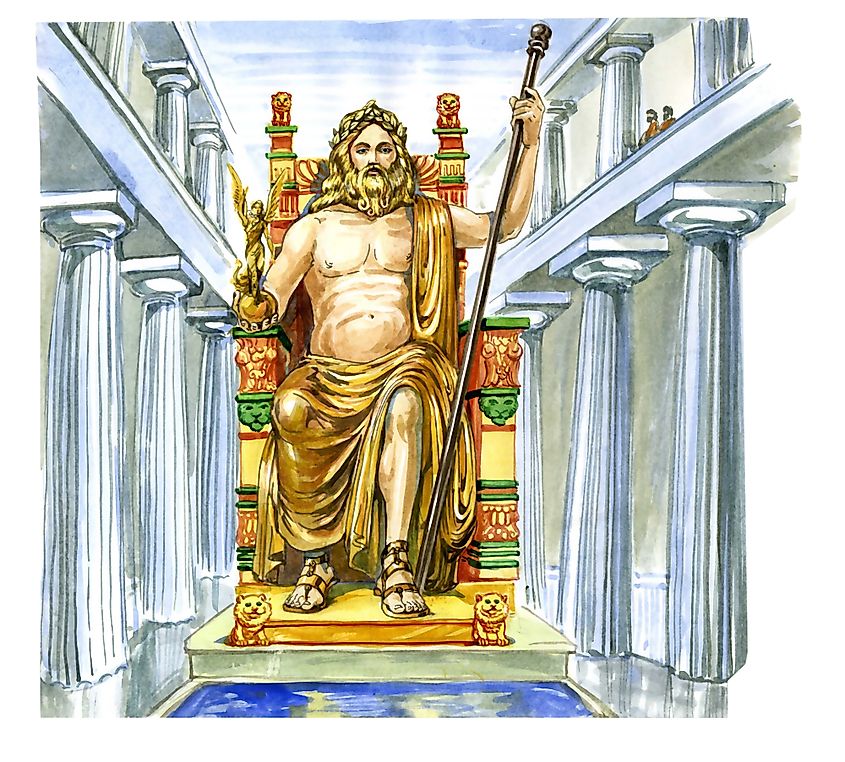
The most famous statue in Greece, The Statue of Zeus, existed in the 5th century BCE as a massive work of art dedicated to the king of the Greek gods. Crafted by the famous Greek sculptor Phidias, it measured about 13 meters tall (42 feet), which would make the god's eye-level equal to that of a human observer standing on the temple's (hypothetical) upper floor.
The statue was seated on a meticulously constructed throne of cedarwood, inlaid with ivory, gold, and precious stones. Zeus' physique, carved from ivory, displayed the detailed musculature of the divine form. His right hand held a small statue of Nike, the goddess of victory, also sculpted from ivory and gold. His left hand held a scepter topped with an eagle, symbols of his dominion over the sky.
The base of the statue was decorated with intricate relief sculptures representing mythical figures and heroes from Greek folklore. The robe of Zeus was made of gold and depicted mythical beings and stories.
Despite its immense size, the statue did not overwhelm the temple that housed it. Rather, the space and the statue engaged in a fine architectural balance, with the temple providing the necessary room for a full appreciation of the statue's significant dimensions and intricate craftsmanship. However, the 1st-century geographer Strabo did state that "if Zeus arose and stood erect he would unroof the temple."
Due to either a fire in 425 CE or disrepair after bans on pagan practices by Christian Rome in 391 CE, the temple vanished (likely looted for materials). However, the remains of Phidias' workshop, where it was constructed, are proof of its existence.
Mausoleum At Halicarnassus
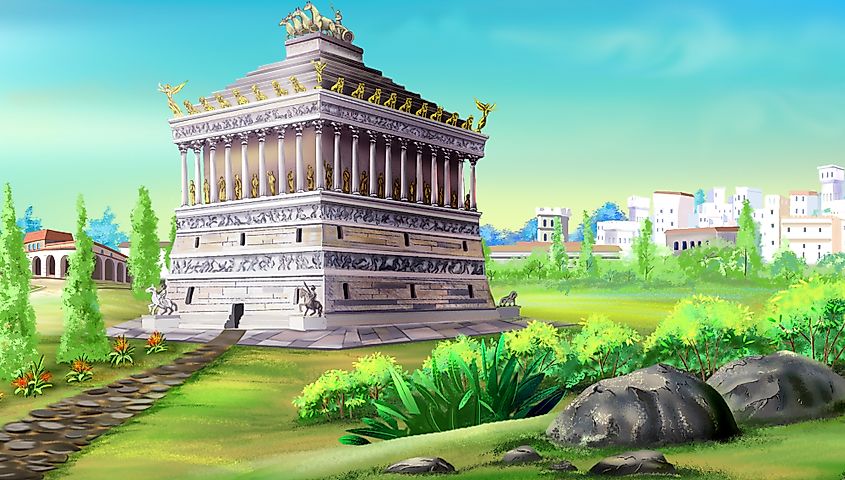
The Mausoleum at Halicarnassus, erected between 353 and 350 BC, was a burial structure for Mausolus, a Persian Satrap, and his wife, Artemisia. This edifice, located in present-day Bodrum, Turkey, was approximately 45 meters (148 ft) high and rectangular in shape.
Constructed primarily from marble, the structure consisted of three distinct sections. The base, a stepped podium, was decorated with reliefs. Above it, the midsection featured thirty-six Ionic columns, with a statue between each pair. The roof, styled like an Egyptian pyramid, tapered to a pointed summit, atop which stood a four-horse chariot sculpted in marble.
Notable sculptors of the age contributed to the design and decoration. Satyros and Pythis, the architects, were credited with the overall design. Skopas, Bryaxis, Timotheus, and Leochares created the decorative sculptures that embellished the four faces of the edifice.
The Mausoleum at Halicarnassus remained intact until, likely, a series of earthquakes in the 13th century caused significant damage, but it is unknown if it was destroyed much earlier. Subsequent raids led to further destruction, with Crusaders repurposing its materials in the 15th century to fortify the Bodrum Castle.
Today, few pieces remain, mostly housed in the British Museum, but the influence of the Mausoleum's design can be seen in several modern architectural works. Even without standing structures, the site continues to be a font of archaeological knowledge regarding ancient funerary architecture and Persian-influenced Greek art.
Temple Of Artemis
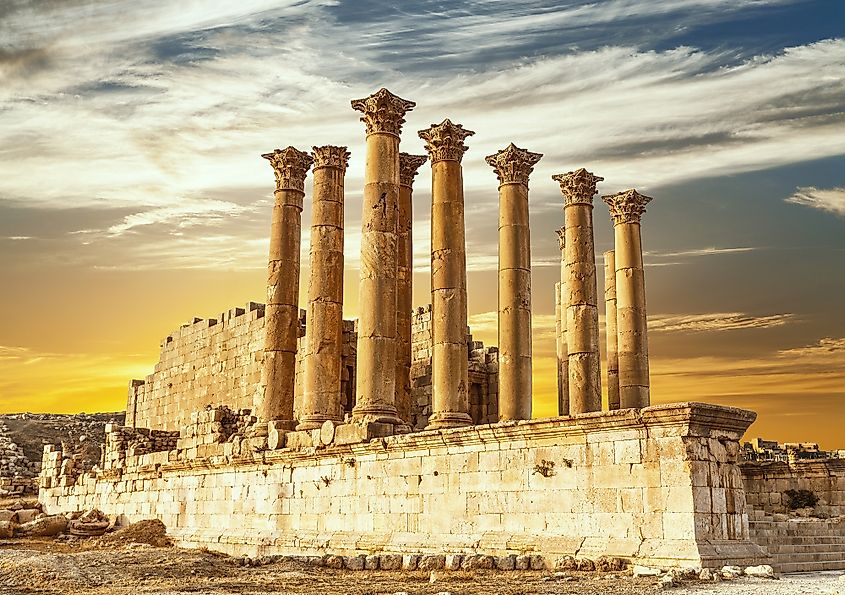
Ephesus, an ancient Greek city located in modern-day Turkey, housed the Temple of Artemis. Built in the 7th century BCE during the Archaic period, it was dedicated to Artemis, the goddess of hunting, wilderness, and wild animals, according to Greek mythology. Covering an area of about 50 by 110 meters (160 by 350 feet), the temple was a rectangular structure with a series of 127 Ionic columns, each approximately 18 m (60 ft) high, supporting a wooden roof. The temple's front was adorned with an opulent altar and stairway.
It was reconstructed several times throughout history due to damage by floods, fires, and human interventions. Notably, the third and most elaborate iteration was financed by King Croesus of Lydia around 550 BCE. Its architecture featured high-quality marble and intricate sculptures crafted by well-known artists such as Scopas of Paros. The inside housed a cult statue of Artemis, an emblem of veneration for pilgrims and worshippers.
In addition to being a religious site, the temple harbored over a thousand items such as coins, treasures, and even literature. It also granted sanctuary, attracting people from across the region. Despite its destruction in 401 CE by a mob led by Saint John Chrysostom, remnants of its foundation and a single reconstructed column mark its location today.
Lighthouse Of Alexandria
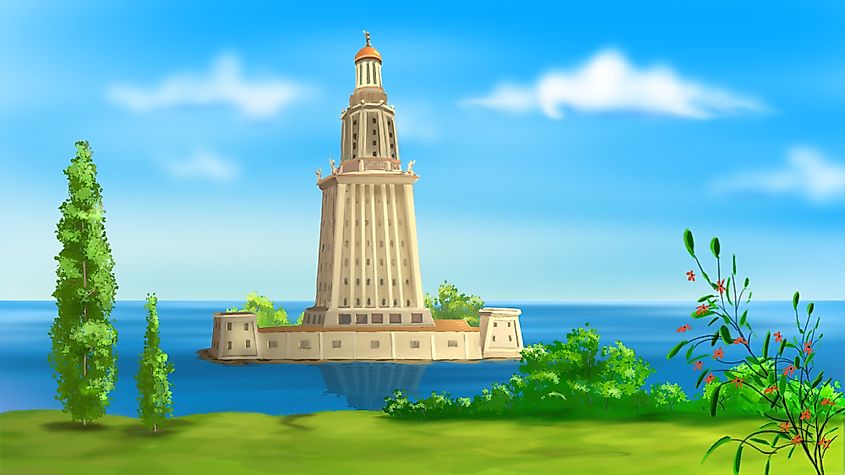
The Lighthouse of Alexandria, known as Pharos, existed on the eastern tip of Pharos Island in the harbor of Alexandria, Egypt. Constructed in the 3rd century BCE under Ptolemy II Philadelphus, the structure took roughly two decades to complete. Designed by the architect Sostratus, it served as a navigational aid for mariners and a symbol of Ptolemaic Egypt's maritime power.
The lighthouse was a three-tiered structure, standing over 100 meters (330 feet) high. The bottom section was square, the middle octagonal, and the top circular, crowned with a mirror that reflected sunlight during the day or fire at night. Each level featured rooms and staircases, providing access to the top.
Constructed primarily from large blocks of light-colored stone, it withstood the elements for many centuries, surviving until the late medieval period. Several earthquakes during the 14th century CE led to its eventual decay and destruction.
The site later served as a quarry for fort and harbour construction. Though the original lighthouse no longer exists, artifacts from its remains were discovered underwater in the late 20th century, including massive stone blocks and statues. Its influence endures in modern lighthouses, with its name, "Pharos," becoming the etymological root of the word "lighthouse" in several languages.
Colossus of Rhodes

The Colossus of Rhodes was an enormous statue, erected in the city of Rhodes in Greece around 280 BCE. Its construction followed the successful defense of the city against a Macedonian siege led by Demetrius Poliorcetes. A sculptor named Chares of Lindos designed and oversaw the creation of the statue. Built from bronze and iron, it stood approximately 33 meters (108 feet) high, making it one of the tallest statues of the ancient world.
The statue represented the sun god Helios, who was venerated in Rhodes. Its striding stance, with one hand shielding its eyes from the sun, was not, as is often erroneously depicted, spanning the city's harbor. Instead, it was most likely positioned on a pedestal near the Mandraki harbor entrance. The statue was hollow, with stone blocks used to stabilize the structure's lower levels. Despite its colossal scale and symbolic significance, the statue stood for only 56 years before an earthquake in 226 BCE caused it to collapse. Its remains lay on the ground for centuries, serving as a tourist attraction in its own right. Attempts to rebuild the statue have been proposed, but none have come to fruition as of yet.
The Great Pyramid Of Giza

The Great Pyramid of Giza, planted adjacent to Cairo in Egypt, is an ancient structure constructed during the reign of Pharaoh Khufu, also known as Cheops, around 2580-2560 BCE. Its purpose was to serve as a tomb for this Pharaoh of the Fourth Dynasty. It stands approximately 481 feet (146.6 meters) tall, a notable feature that contributed to it being the tallest man-made structure for around 3,800 years. It encompasses about 13 acres (5.3 hectares) and consists of approximately 2.3 million stone blocks, each weighing an average of 2.5 tons.
The pyramid's internal structure includes three primary chambers: the King's chamber, the Queen's chamber, and an unfinished chamber at the base. Interestingly, the main chamber contains a granite sarcophagus believed to have held the remains of Pharaoh Khufu. The pyramid's construction exhibits precise engineering skills, as its sides are accurately oriented to the cardinal directions. Furthermore, the Great Pyramid's facade was originally covered with casing stones that reflected the sun, giving it a brilliant appearance, though these stones are no longer present. The Great Pyramid of Khufu is part of the Giza pyramid complex that also includes two other major pyramids, several smaller pyramids, and the Great Sphinx. The techniques used in the construction of the pyramid likely involved a system of ramps, but the specifics are not certain. Regardless, it is without a doubt a wonder of both the ancient and modern world for both its sheer size and survival over time.
Nearly every generation of humankind tends to believe they are the pinnacle of cultural and industrial development; it is with this audacity that our ancestors managed to leave undeniable marks on this planet. Could the original engineers and laborers have known that, thousands of years later, their feats would still be celebrated and remembered? For some, being cemented into historical records is the closest one can get to immortality. Therefore, these ancient wonders transcend time and guide us to leave a great inheritance for all future descendants.











